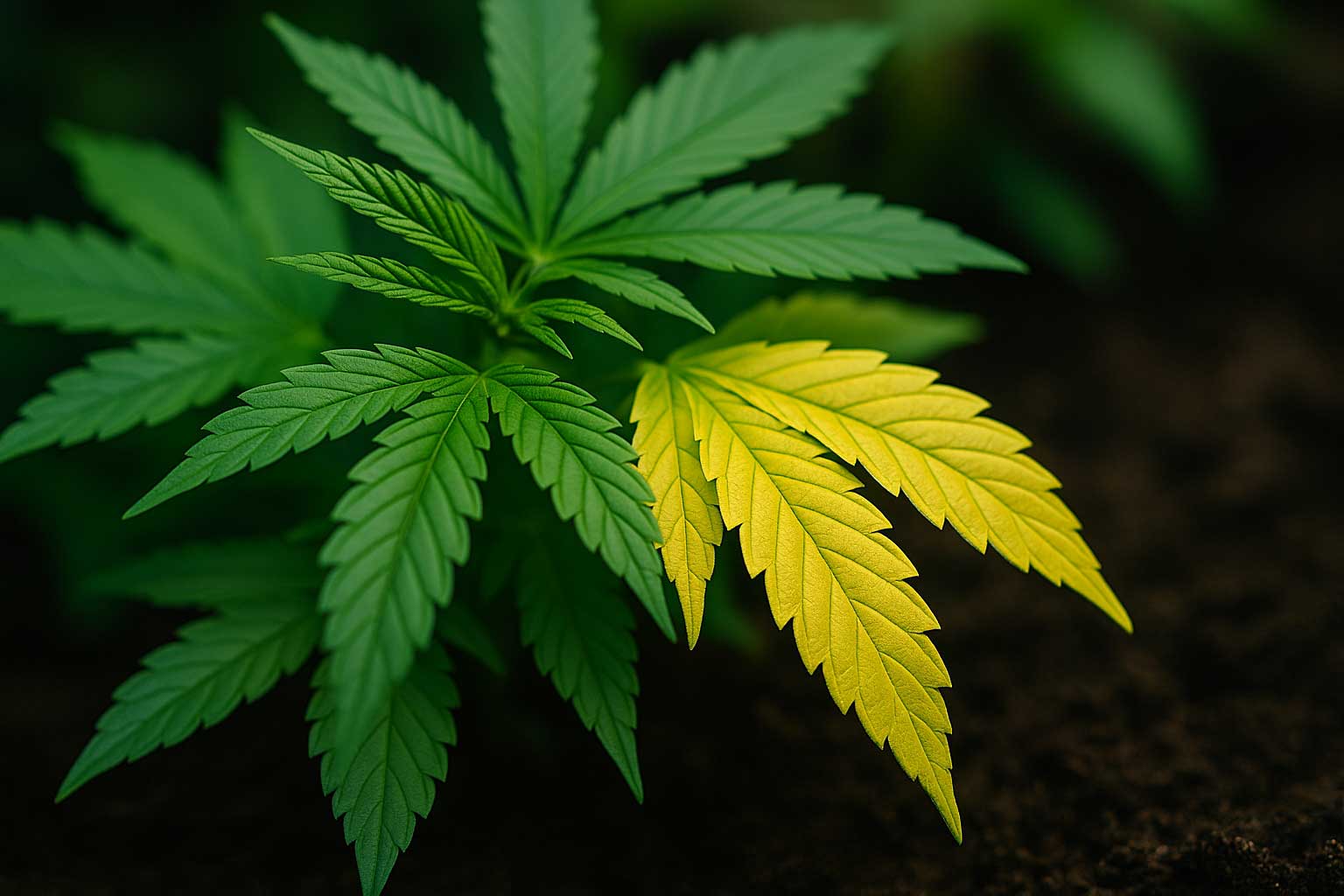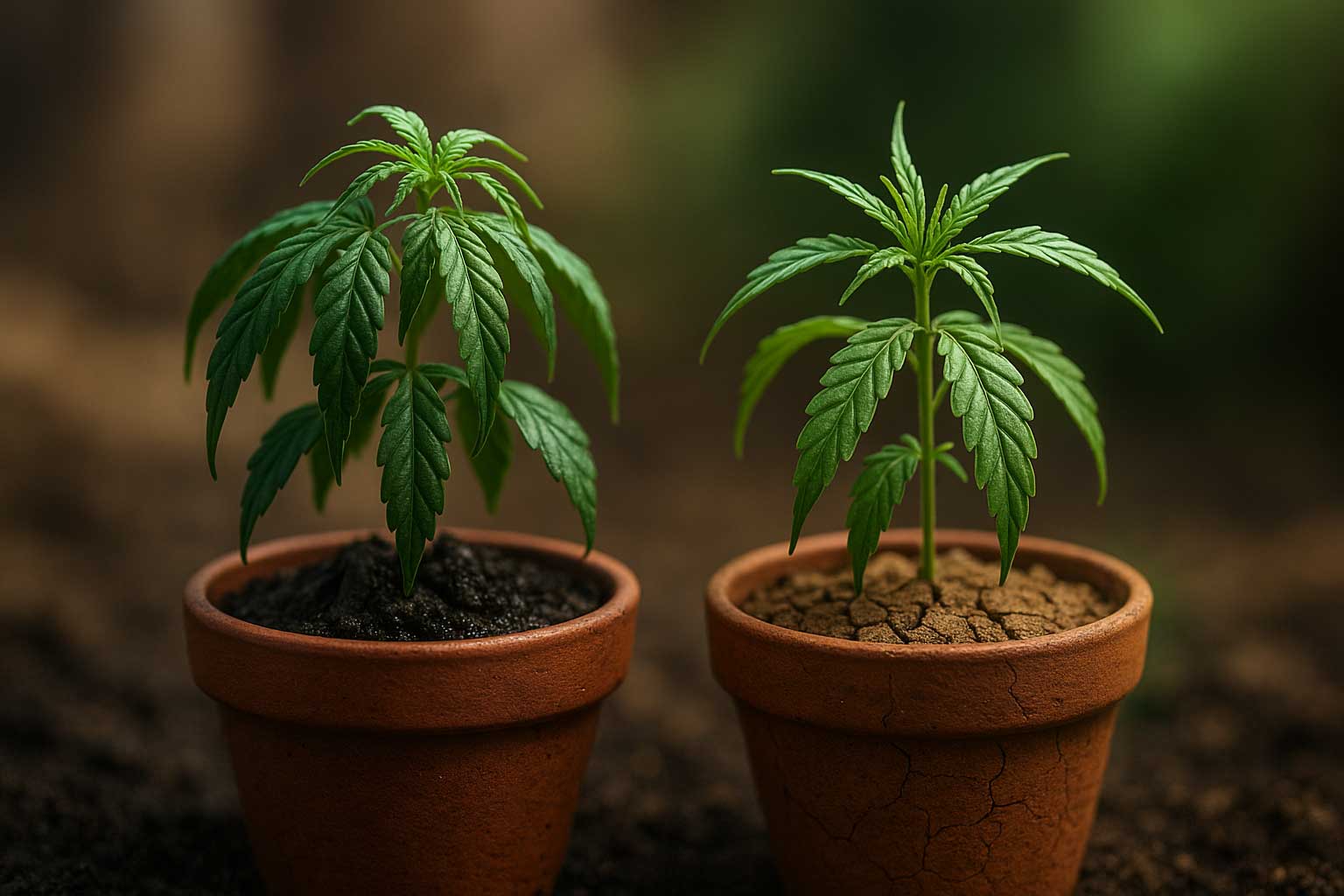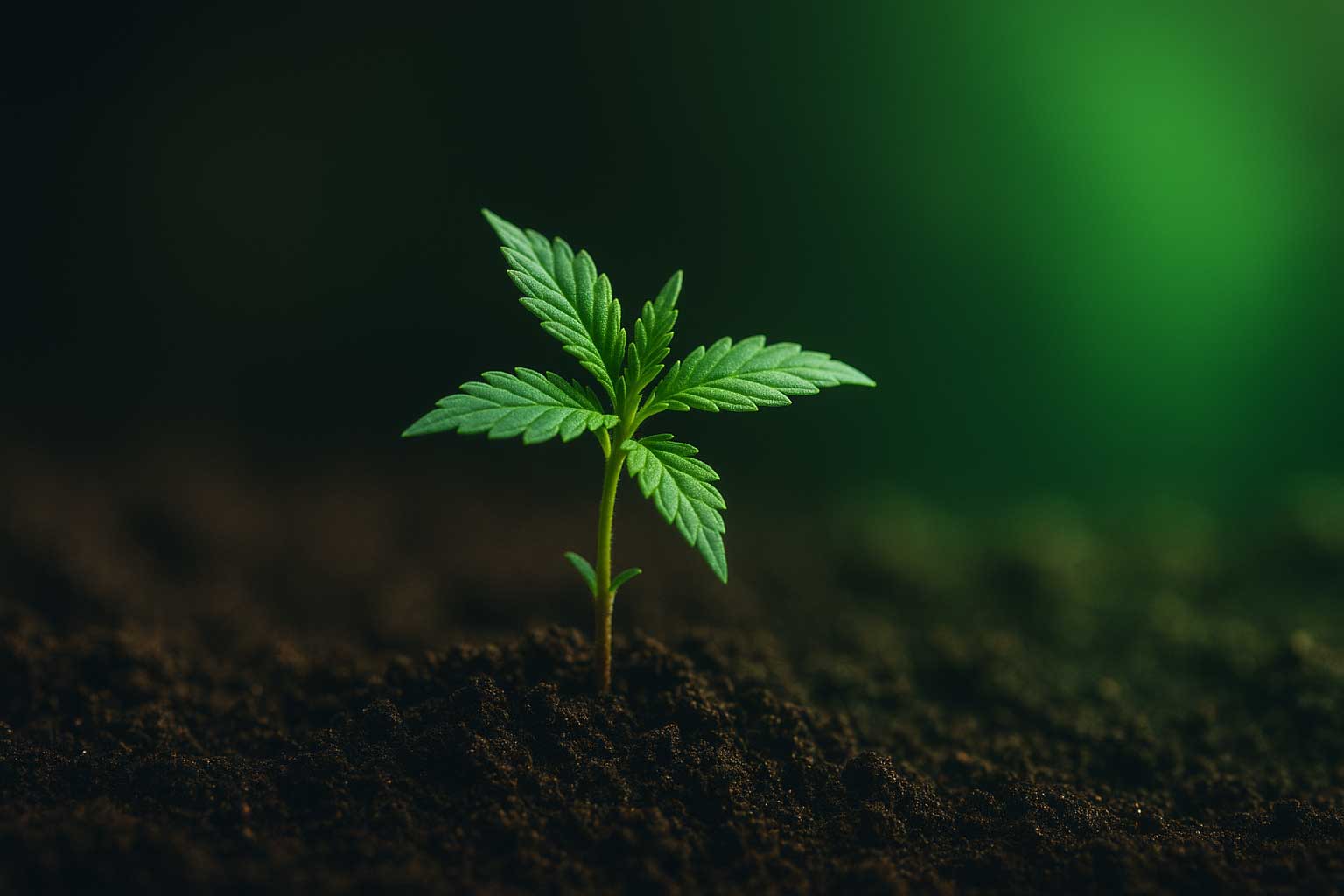5 Common Reasons Cannabis Leaves Turn Yellow (and How to Fix Them)
Noticing yellow cannabis leaves? Don’t panic — it’s one of the most common grower questions! Yellowing usually points to a simple issue with watering, nutrients, light, or pH. Here’s how to diagnose the cause quickly and bring your plants back to a healthy green.
Educational content for adults in legal regions. Always follow local laws and cultivate responsibly.
💧 1) Overwatering
Too much water pushes air out of the root zone, limiting oxygen and slowing growth. Cannabis roots need a balance of air and moisture.
What to look for
- Heavy, soggy pots that stay wet for days
- Droopy leaves even though the medium is moist
- Musty smell or fungus gnats on soil surface
Simple fix: Let the top 2–3 cm (1 inch) of medium dry before watering again. Ensure proper drainage holes and avoid water buildup in saucers. Add perlite or coco coir to improve aeration if soil is compacted.
Related read: How to Tell If You’re Overwatering or Underwatering Cannabis Plants
🥵 2) Underwatering
Without consistent moisture, nutrient movement stops and leaves fade from green to yellow, often crisping at the edges.
What to look for
- Dry, shrinking medium pulling from pot edges
- Crispy or curling leaves with brittle texture
- Very light pot when lifted
Simple fix: Water slowly and evenly until slight runoff appears. If water runs off immediately, bottom-soak the pot for 15–20 minutes to rehydrate. Resume a steady watering rhythm.
🌿 3) Nutrient Deficiency (Usually Nitrogen)
Nitrogen fuels healthy green foliage. When it’s lacking, older fan leaves turn yellow first as the plant reallocates resources upward.
What to look for
- Lower leaves fading from green to yellow
- Slow vegetative growth, thin stems
Simple fix: Feed a cannabis-specific nutrient with higher N in veg (e.g., 3-1-2 or 10-5-5) at half strength, then observe for 7–10 days. For organic grows, top-dress compost or worm castings. Avoid overfeeding to prevent nutrient burn.
⚖️ 4) pH Imbalance
Even when nutrients are present, incorrect pH blocks absorption — plants appear deficient even with proper feeding.
What to look for
- Yellowing persists after feeding
- Multiple nutrient symptoms at once
Simple fix: Check runoff or reservoir pH. Ideal ranges: Soil 6.0–7.0, Coco/Hydro 5.8–6.2. Flush with pH-balanced water, then resume feeding within range.
🌤️ 5) Light Stress (Too Little or Too Much)
Light intensity affects leaf color. Too little light leads to pale yellowing; too much causes bleaching or burn.
What to look for
- Too little light: Stretching stems, pale top leaves
- Too much light: Yellow or white patches on upper leaves, dry edges
Simple fix: Maintain proper LED distance (per manufacturer). Veg plants prefer 300–500 µmol/m²/s PPFD; flower 600–900 µmol/m²/s. Adjust gradually to avoid shock.
✨ Bonus: Natural Leaf Aging
During late flower, it’s normal for older fan leaves to yellow as the plant reallocates energy to buds. If overall growth is strong, this is natural senescence — not a problem.
🌾 Quick Diagnosis Table
| Cause | Typical Signs | Fast Fix |
|---|---|---|
| Overwatering | Soggy medium, droop, gnats | Dry out; add perlite |
| Underwatering | Dry soil, crispy tips | Water thoroughly |
| Nitrogen deficiency | Lower leaves yellow first | Feed balanced N fertilizer |
| pH imbalance | Yellowing after feeding | Adjust pH to 6.0–7.0 soil / 5.8–6.2 coco |
| Light stress | Pale or burnt leaves | Adjust light height/intensity |



